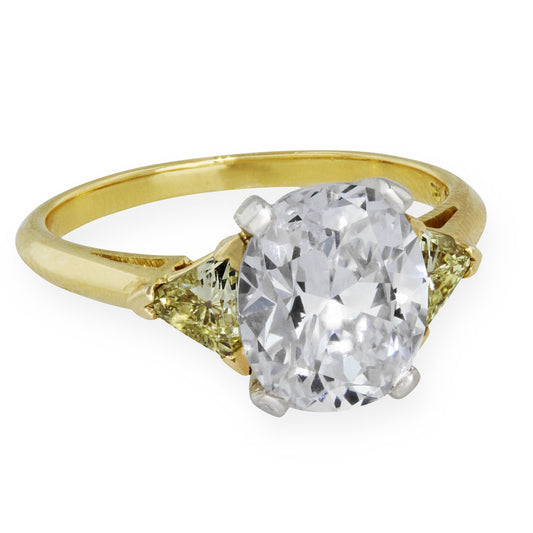“With this ring, I thee wed.” Very famous verbiage that every bride, every groom, and virtually every wedding guest readily knows. But few of us know just how the tradition of bestowing a ring on the third finger of the left hand of the bride actually came about, much less how the practice of exchanging rings was established. And frankly, there is no clearly defined history, just many suppositions as to how this time-honored convention came to be observed.
It is generally believed that the ritual took root with the ancient Egyptians, who plucked reeds, rushes, hemp, what-have-you, from the river banks, and braided them to make circular adornments for the finger. Papyrus scrolls dating back 3,000 years feature archetypal, pictorial imagery and hieroglyphics that seem to support this theory. It seems that the circle has always conveyed a sense of eternity, of unbroken unity, and perpetuity. Additionally, it was noted that the Egyptians wore this circular band on the third finger of the left hand; it was believed that that finger had a vein that coursed directly to the heart. This vein (which actually does not exist) later became known as the vena amoris, the vein of love. Throughout history, wedding rings have had many other symbolic meanings. The Romans considered the marriage ring a way to indicate “ownership” to some extent. They used iron to make the ring and it is thought that the use of metal is laid the groundwork for the gold and platinum rings we favor today. Once “owned,” a woman was expected to be faithful and that belief led to yet another kind of metal band, the puzzle ring. These complicated rings were popular in the Middle East. The ring was actually composed of several interlocking bands that formed a single ring. However, when the ring was removed from the finger, the interconnecting bands fell apart into the component pieces. Putting it back together was a devilishly tricky process. The theory behind using a complex ring like this was to enforce fidelity, a way to foil a wife’s potential scheme to remove her ring in order to pose as an available maiden. Most women would have been very hesitant to remove a puzzle ring, knowing reconstructing that circle was tantamount to impossible.

Yet another interesting fact about wedding rings revolves around the metal thimbles that husbands gave their wives in Colonial America. Puritans did not believe in any frivolous ornamentation, so a practical thimble was a traditional gift from husband to wife. However, women would file off the top part of the thimble and in so doing, would create a wide, embellished band — a wedding ring! Men’s rings are hardly rooted in such extensive history and convention. Men did not start to wear wedding rings until World War II. While the jewelry industry saw a marketing opportunity and attempted to promote the idea of a wedding ring for men in the late 19th and early 20th centuries, the custom did not catch on immediately. It took World War II to make the double-wedding-ring ritual popular. It was also a meaningful way for a soldier, stationed away from home, to remember his wife back home. By the late 1940s, nearly 80% of weddings included a double-ring ceremony.
Today, many brides have a single wedding ring that they wear daily and a more elegant ring that they sport on special occasions. Regardless of its decorative or utilitarian meaning, the most popular rings are platinum or gold — yellow, white, or rose. Whether a simple band or an extravagant, diamond-encrusted ring, the sentiment of “forever” is intrinsic in that unbroken circle.
Ruth J. Katz








